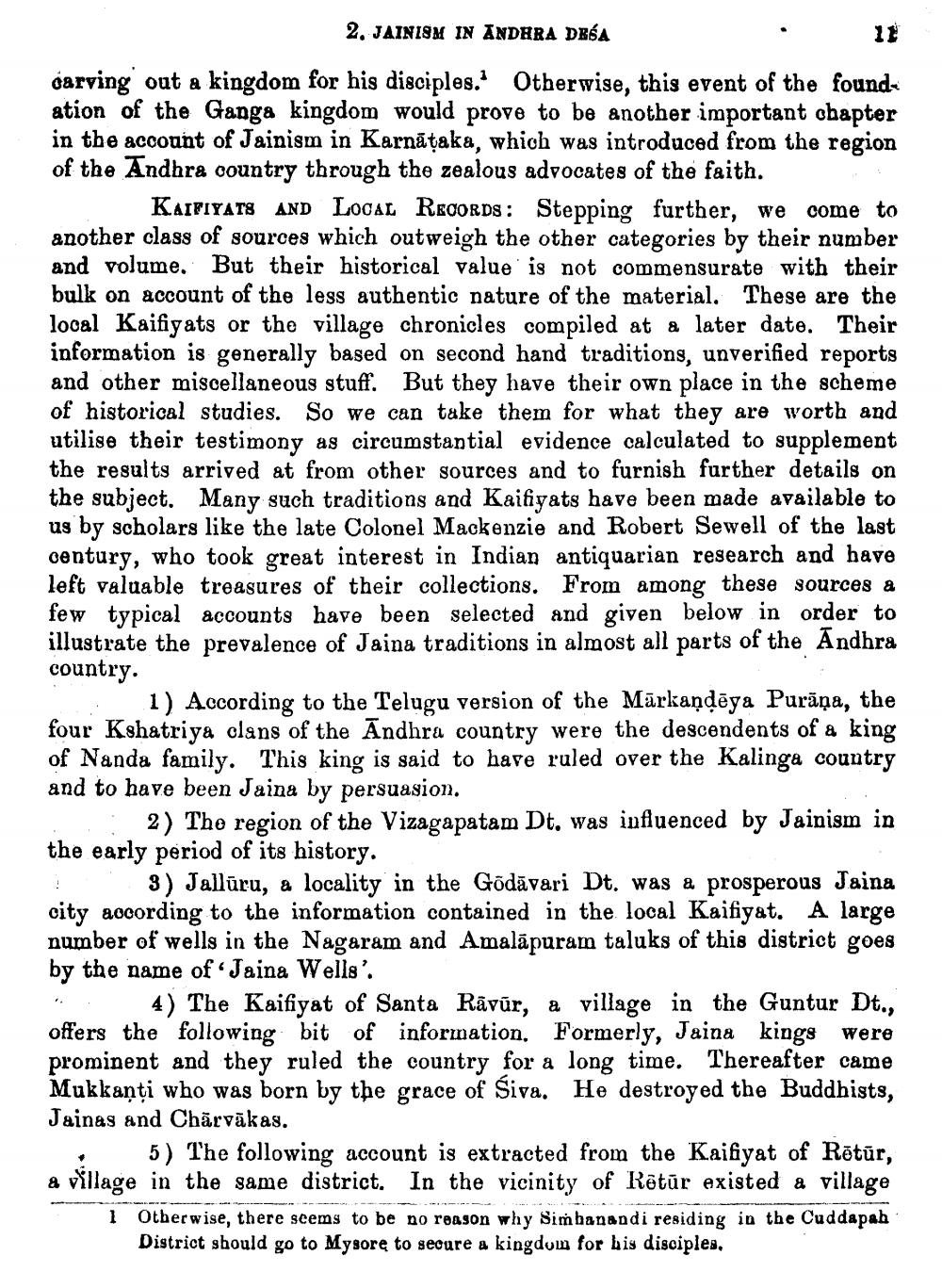________________
2. JAINISM IN ANDHRA DEGA
darving out a kingdom for his disciples. Otherwise, this event of the foundation of the Ganga kingdom would prove to be another important chapter in the account of Jainism in Karnataka, which was introduced from the region of the Andhra country through the zealous advocates of the faith.
KAIFIYATS AND Local Records: Stepping further, we come to another class of sources which outweigh the other categories by their number and volume. But their historical value is not commensurate with their bulk on account of the less authentic nature of the material. These are the local Kaifiyats or the village chronicles compiled at a later date. Their information is generally based on second hand traditions, unverified reports and other miscellaneous stuff. But they have their own place in the scheme of historical studies. So we can take them for what they are worth and utilise their testimony as circumstantial evidence calculated to supplement the results arrived at from other sources and to furnish further details on the subject. Many such traditions and Kaifiyats have been made available to us by scholars like the late Colonel Mackenzie and Robert Sewell of the last century, who took great interest in Indian antiquarian research and have left valuable treasures of their collections. From among these sources a few typical accounts have been selected and given below in order to illustrate the prevalence of Jaina traditions in almost all parts of the Andhra country.
1) According to the Telugu version of the Mārkaņdēga Purāņa, the four Kshatriya clans of the Andhra country were the descendents of a king of Nanda family. This king is said to have ruled over the Kalinga country and to have been Jaina by persuasion.
2) The region of the Vizagapatam Dt. was influenced by Jainism in the early period of its history.
. 3) Jallūru, a locality in the Gödāvari Dt. was a prosperous Jaina city according to the information contained in the local Kaifiyat. A large number of wells in the Nagaram and Amalāpuram taluks of this district goes by the name of Jaina Wells.
4) The Kaifiyat of Santa Rāvūr, a village in the Guntur Dt., offers the following bit of information. Formerly, Jaina kings were prominent and they ruled the country for a long time. Thereafter came Mukkaņti who was born by the grace of Siva. He destroyed the Buddhists, Jainas and Chārvākas.
5) The following account is extracted from the Kaifiyat of Rētūr, a village in the same district. In the vicinity of Rötur existed a village
1 Otherwise, there seems to be no reason why Simbanandi residing in the Cuddapah
District should go to Mysore to secure a kingdom for his disciples.




